Chris Howard's Blog, page 15
November 1, 2022
M78 in RGB - I swapped out the narrowband EFW with the RGB+Ha...
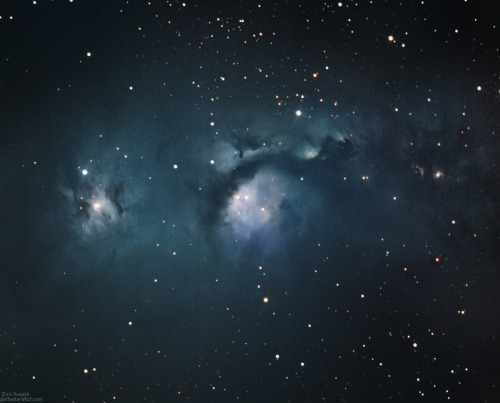
M78 in RGB - I swapped out the narrowband EFW with the RGB+Ha filters, and ran through RGB for Messier 78 (NGC 2068), a reflection nebula in Orion. I also experimented with 2x2 binning with the ZWO ASI1600MM-Pro mono camera, and taking the resolution from 0.98 arcseconds/pixel to 1.96"/ pixel worked pretty well.
October 30, 2022
Well, we had a good run of clear night skies last week, and then...
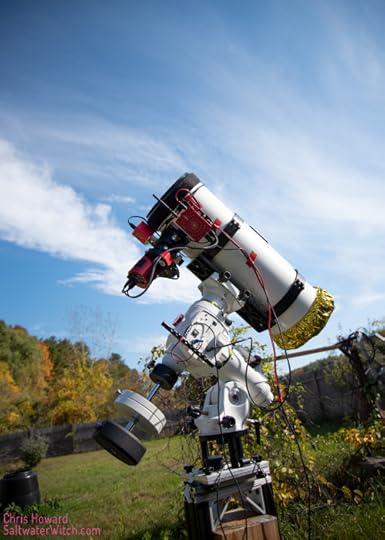
Well, we had a good run of clear night skies last week, and then it rained for three or four days. I set everything back up this afternoon, going with the full RGB + Ha filter set tonight. It’s all about taking very long exposure images with a telescope, and by long exposure I’m talking the shutter open 5 minutes for each frame, taking a hundred of these through the night while holding the sensor temperature to nice cool -10C the whole time. Every image I captured over the last five clear nights has been through this 8 inch Newtonian scope (8 inch primary mirror (203mm) inside the tube where the gold foil cap covers the end, the secondary mirror is where the camera connects to the focuser, toward the top of the scope). And I ran every night’s imaging session with the ZWO ASIAir controller.
October 22, 2022
The Orion, De Mairin and Running Man Nebulas (M42, M43, NGC...
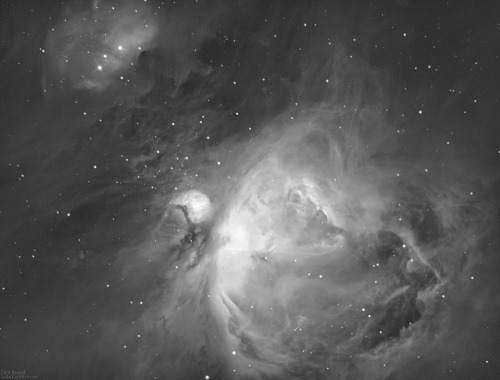
The Orion, De Mairin and Running Man Nebulas (M42, M43, NGC 1977) in narrowband hydrogen-alpha. 36 x 300-second exposures, Newtonian 800mm @ f/4. More of my astro stuff: https://SaltwaterWitch.com
The Rosette in Ha with the 800mm Newtonian - The Rosette Nebula...
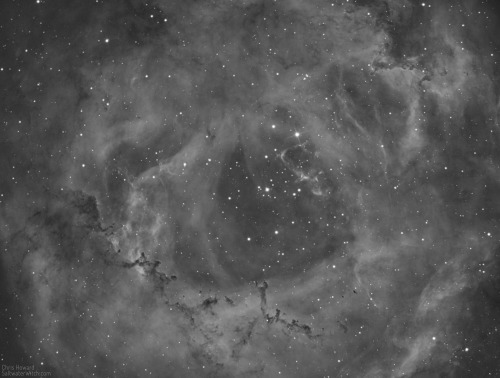
The Rosette in Ha with the 800mm Newtonian - The Rosette Nebula (Sh2-275, Caldwell 49) is an HII region and star forming complex in the constellation Monoceros, about 5,200 lightyears away and about 130 lightyears across. The dark chain of interstellar gasses and dust along the bottom is punctuated with Bok Globules, dense regions of star formation. The open cluster of massive blue stars in the center (NGC 2244) are responsible for ionizing the surrounding hydrogen, oxygen, and other gasses; bathed in the intense radiation from these stars, the clouds themselves emit light. These giant stars originally formed out of the nebula and they’re now in the process of hollowing out the cloud structure and creating the bubbles of ionization visible around the nebula’s core. Imaging notes: 30 x 300-second subs in Ha, stacked in DSS. Apertura 800mm f/4 Newtonian OTA, ZWO ASI1600MM-Pro mono camera, Antlia 3nm Ha filter, ZWO ASI290M OAG, on the Sky-Watcher EQ6R-Pro mount with the ZWO ASIAir Plus controller. My astro blog: https://SaltwaterWitch.com
October 20, 2022
Another one from Tuesday night’s imaging run. NGC 6888,...
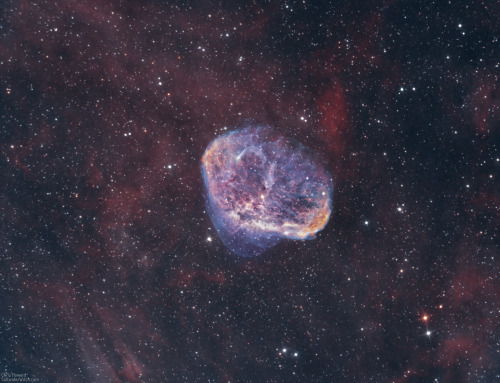
Another one from Tuesday night’s imaging run. NGC 6888, the Crescent Nebula in Ha+OIII. The Crescent is an emission nebula 25 lightyears across, about 5000 lightyears away in the constellation Cygnus. This interesting set of structures with multiple shock waves, including an inner shell of hydrogen surrounded by an expanding envelope of oxygen (the semi-transparent bubbling blue structure) is the result of a collision of the fast-burning Wolf-Rayet star WR136 with a massive red-giant star. Imaging notes: 80 x 300-second subs in Ha and OIII, stacked in DSS. Apertura 800mm f/4 Newtonian OTA, ZWO ASI1600MM-Pro mono camera, Antlia 3nm Ha, OIII filters, ZWO ASI290M OAG, on the Sky-Watcher EQ6R-Pro mount with the ZWO ASIAir Plus controller. More astro stuff here: https://SaltwaterWitch.com
October 19, 2022
Narrowband with the Newt - We finally had some clear-ish skies...
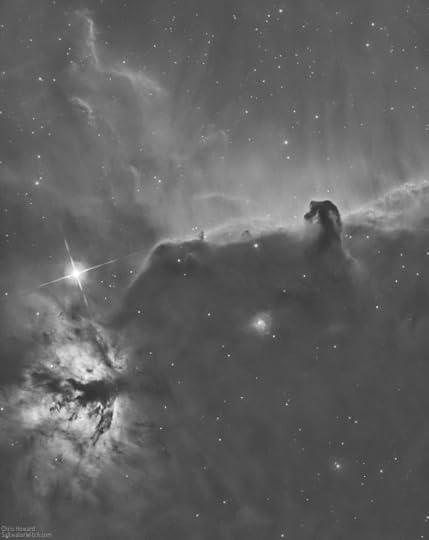
Narrowband with the Newt - We finally had some clear-ish skies last night after several days of gloom and rain, and I got to test out the 800mm f/4 newtonian scope with the ZWO ASI1600MM-Pro monochrome camera and 3nm narrowband filters. I spent most of the night imaging NGC 6888, the Crescent Nebula in Ha and OIII, and around 2am moved to the other side of the sky (away from a ~30% waning moon) to capture the Horsehead Nebula (B33) and the Flame Nebula (NGC 2024, Sh2-277), along with the leftmost star in Orion’s Belt, Alnitak (bright star with the diffraction spikes from the Newtonian’s secondary mirror) Alnitak is actually a triple star system, with most of the light and energy coming from ζ Orionis (zeta Ori), a massive blue super-giant 20 times larger than our star and over 21,000 times brighter. Imaging notes: 20 x 300-second subs in Ha, stacked in DSS. Apertura 800mm f/4 Newtonian OTA, ZWO ASI1600MM-Pro mono camera, Antlia 3nm Ha filter, ZWO ASI290M OAG, on the Sky-Watcher EQ6R-Pro mount with the ZWO ASIAir Plus controller.
October 16, 2022
Trying something new tonight. So far, I’ve only used the...
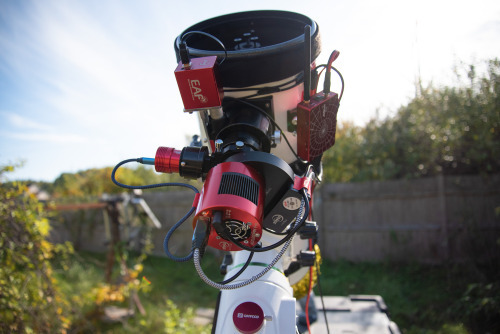
Trying something new tonight. So far, I’ve only used the ZWO ASIAir Plus with the AM5 mount and my William Optics scopes. So, I’m setting up the Sky-Watcher EQ6R-Pro and the 800mm Newtonian for narrowband, and decided to try out the ASIAir with this combination of gear. It has every feature I use with NINA (my normal astro controller system), that’s polar alignment, plate solving, sequenced capture, guiding, so should work well!
October 12, 2022
Kicked off Dungeons & Dragons night with session zero +...
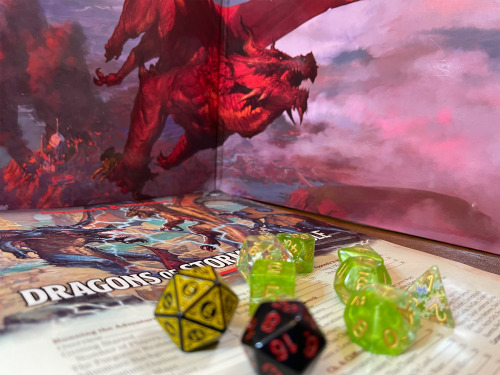
Kicked off Dungeons & Dragons night with session zero + first encounter, running the new Dragons of Stormwreck Isle adventure.
October 5, 2022
Orion Nebula in LRGB color - It’s that time of year—my...
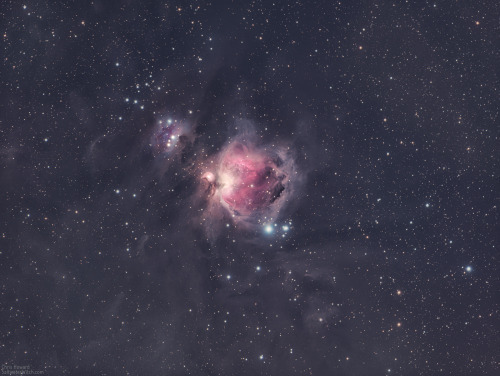
Orion Nebula in LRGB color - It’s that time of year—my favorite, in fact. The autumnal equinox was on the 22nd, and that means Orion is back in the night sky, well actually in the very early morning sky. In the morning of the 29th the whole constellation was above the trees, around 25° rising in the East at 2 AM, and I captured 30 subs each for Red, Green, Blue, Luminance. Here they are stacked and processed. My Astro Blog: https://SaltwaterWitch.com
October 4, 2022
The Ghost of Cassiopeia - Let’s start with that big star,...
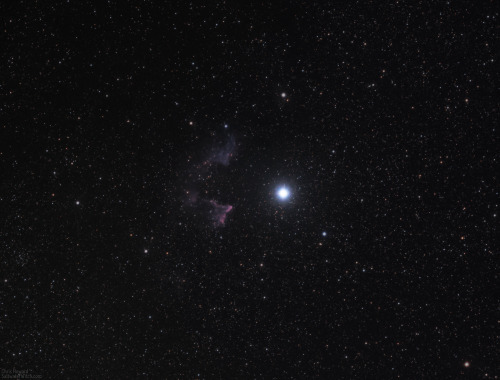
The Ghost of Cassiopeia - Let’s start with that big star, Gamma Cassiopeiae (γ Cassiopeiae) or just “Gamma Cas” and sometimes “Navi” is the center star in the “W” asterism that makes up the constellation Cassiopeia, one of the easiest constellations to find in northern hemisphere skies. It’s an eruptive variable star—which sounds exciting for a star; this basically means it is unpredictably variable, with an apparent magnitude between 1.6 and 3, and does not follow an observed repeatable cycle. The two nebulae IC63 (“Ghost Nebula”, below γ Cass in this rotation) and IC59 (above) are fairly dim, but do reflect light from γ Cass and other nearby stars, and IC63 exhibits some emission properties, gaining energy and then emitting it as light. Gamma Cas and both nebulae are about 550 lightyears away, very close to us. In terms of distance from Earth, this is one of the closest Deep Sky Objects I have ever captured, and M45, the Pleiades, at around 450 lightyears may actually be the closest. Imaging Notes: 93 x 180-second subs across Red, Green, Blue filters (Astronomik Deep Sky RGB), ZWO ASI1600MM-Pro monochrome camera running at -10C, ZWO AM5 EQ mount, William Optics SpaceCat 51 apochromatic refractor, ZWO ASI290MM guide camera with OAG.



